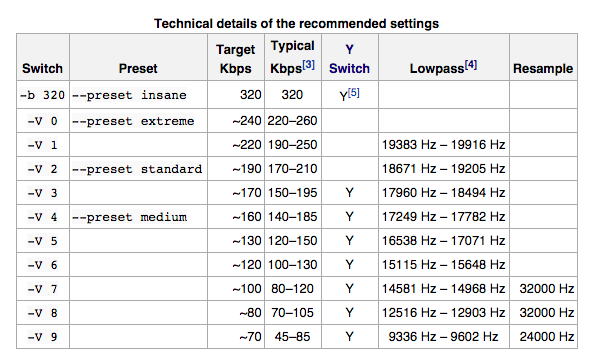I first thought this was an anti-aliasing filter, but have long since realised (and been reminded of by an anonymous passer-by viewing this post), the input signal is already band-limited.
So the only other reason for limiting frequencies like this speaks to the fundamentals of what MP3 is; a space-saver. The filter is a non-essential information limiter.
--preset insane asumes space/bandwidth doesn't matter, so disables this information limiter. The reason other presets use this LPF is because they take into account the negative effect of accurate high-frequencies in MP3, like the effect of the 'sfb21' band, which is described later under The Y Switch heading. So it's seen as a resource-drain for little gain. A trade-off which is seen as acceptable in an 'insane' preset.
Disabling the filter would likely just lead to a slightly larger file and some subjective audio perception debates.
More About LAME Presets and Filters
LAME Low-Pass Filters
Let's look at the chart you posted here. (from wiki.hydrogenaud.io)

The LPFs(low-pass filters) in this chart are not primarily anti-aliasing filters. They are there for a few different reasons, one of which being the fact that for a specific preset, there is a maximum frequency that can be reliably stored; as the bitrate increases, the maximum frequency that can be reliably stored increases and so the cutoff frequency of the LPF is increased accordingly, until the quality of compression is such that a LPF is no longer required or desired. (The LPF frequency ranges displayed in the chart are transition periods.)
I can't give an exact reason for --preset extreme not having an anti-aliasing filter, but as an educated guess, I'd say it was simply tested and found not to be necessary. These presets have been extensively tested and tweaked for optimum performance or quality, or to find a balance of the two, depending on the preset.
The Y Switch
What's interesting is that --preset insane has the -Y switch enabled. Now the Y switch is a bit more complicated. A quote from a Hydrogenaudio Wiki page on this subject attempts to explain it in a single sentence;
The Y switch prevents global gain quantization from being decreased solely to accommodate the needs of sfb21.
In the MP3 format, audio is processed in bands of frequencies. Band 21, or 'sfb21' handles the 16kHz plus(for 44.1kHz SR) frequencies. The difference between sfb21 and the rest of the bands, is that the sfb21 'scale factor'(it's quality, basically) cannot be independently adjusted. So if the quality of the sfb21 band needs to be increased, all the bands are consequently increased. So what the Y switch does, basically, is prevent the quality of the lower frequencies from increasing, just because sfb21 needs to be increased. Bear in mind, the -Y switch can only be activated in VBR mode. This is because in effect, the Y switch is implicit in CBR and ABR modes.
Absolute Best Quality?
I've read some threads with people asking how to get the absolute best quality from the LAME encoder. Most replies state that --preset insane has been tweaked to allow the best possible quality, but some people seem to think that disabling the Y switch is a possible way to achieve better quality. Perceived sound quality is subjective, and will always be a much debated subject.
What are the best settings? Well, the answer to this is repeated a lot on this site, and I think it's relevent here; "whichever sound the best to you".
(And btw, if "filesize doesn't really matter", use a more accurate format :))
Relevant Links
Anti-aliasing Filter
MP3 Encoding
The Y Switch and the sfb21
Encoding Quality Guide
Encoding Quality Improvement?
Why MP3s Omit HF Content
LAME Maximum Quality and Archiving





